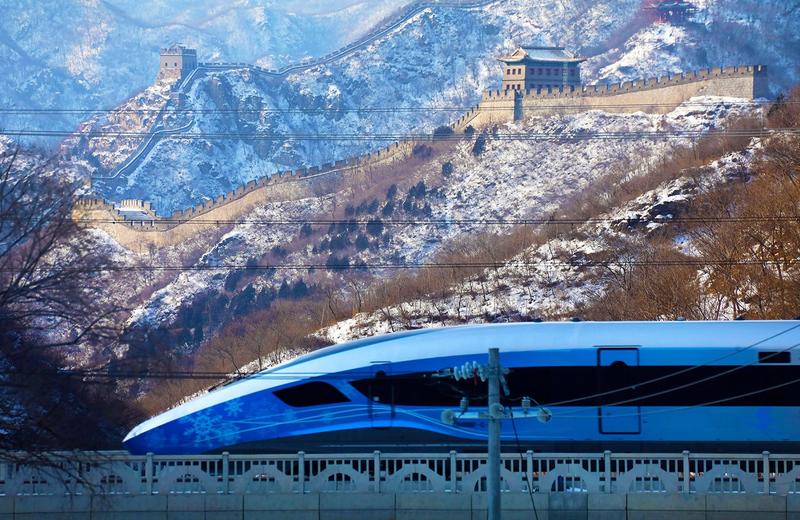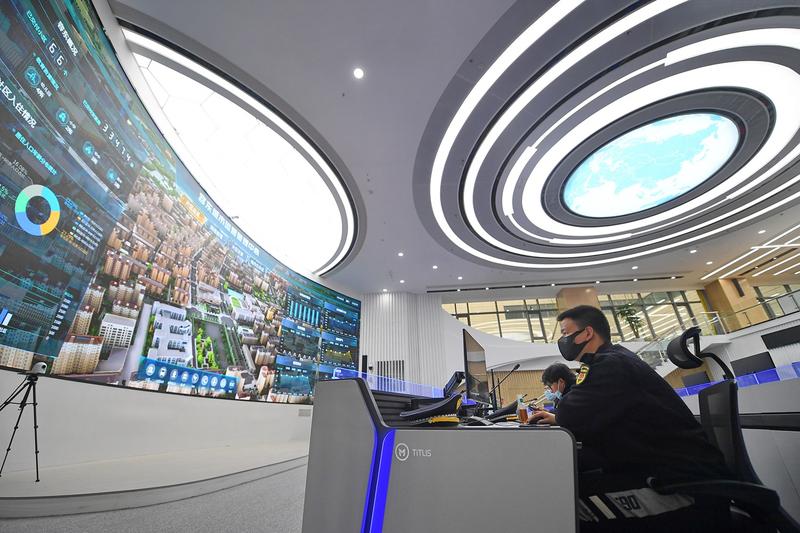Success of the Xiong'an New Area, various industries proof of province's continuous improvement
 An aerial photo showing the Yuerong Park in the Xiong'an New Area in Hebei in April. (XING GUANGLI / XINHUA)
An aerial photo showing the Yuerong Park in the Xiong'an New Area in Hebei in April. (XING GUANGLI / XINHUA)
Editor's note: China has seen tremendous changes nationwide, from economic growth to environmental protection, from social improvement to cultural progress. In this series, China Daily maps the changes and tells the stories of the people who lived through them.
Transitioning from villager to city dweller has been the biggest change to Li Yanhong's life over the past decade.
The 47-year-old used to live in Hexi village in Hebei province, but when her home was rezoned to become part of the Xiong'an New Area five years ago, she and her family became residents of the new city.
Dubbed China's youngest city and a "city of the future", Xiong'an was established in April 2017 to serve as the new home for functions nonessential to Beijing's role as the nation's capital, and to advance the development of the Beijing-Tianjin-Hebei region.
 An aerial photo of the Xiong'an Railway Station in Hebei province on March 31. (YANG SHIYAO / XINHUA)
An aerial photo of the Xiong'an Railway Station in Hebei province on March 31. (YANG SHIYAO / XINHUA)
Since then, people who live in Xiong'an have become the envy of many Chinese.
But it wasn't until earlier this year that Li really felt she had become a city dweller.
With her husband and two sons, Li moved into a 120-square-meter apartment in a newly built residential community in the Rongdong area at the end of last year.
The new home was given as compensation by the local government for the use of her former village house. In addition to this, Li obtained three more new apartments of different sizes, which she rents out.
In addition, she was hired to work as a cleaner in a nearby community, giving her a stable income and a convenient commute.
"My life has become totally different, and I'm excited about my new identity," she said.
 A train runs on the Beijing-Zhangjiakou High-speed Line in Beijing. (ZHU XINGXIN / CHINA DAILY)
A train runs on the Beijing-Zhangjiakou High-speed Line in Beijing. (ZHU XINGXIN / CHINA DAILY)
All these changes are the result of the development of Hebei, a province that nearly surrounds two major cities-Beijing and Tianjin.
Since Xiong'an was established, it has become one of the province's calling cards.
"We should make every effort to turn Xiong'an into a national model for high-quality development," Ni Yuefeng, secretary of the Hebei Provincial Committee of the Communist Party of China, said during an inspection visit to the area in June.
By the end of last year, construction had begun on 177 key projects in Xiong'an, with a total investment of 618.4 billion yuan ($97.2 billion). Sixty have been completed, according to Xinhua News Agency.
"At present, Xiong'an is at a key development stage with large-scale construction going on, as the area gradually becomes home to nonessential functions from Beijing," said Tian Jinchang, deputy secretary of the CPC Working Committee for Xiong'an New Area.
 City management workers at a supervision center in the Xiong'an New Area in Hebei in March. (ZHU XUDONG / XINHUA)
City management workers at a supervision center in the Xiong'an New Area in Hebei in March. (ZHU XUDONG / XINHUA)
According to Ni, Xiong'an will house headquarters and subsidiaries of State-owned enterprises, which will be key to the development of the area.
Top officials in Hebei said both the city and the province serve as national models for high-quality development.
"Hebei has the foundation for thoroughly implementing national strategies, for enhancing overall economic strength, for improving ecological and environmental quality and for steadily improving living standards," the Hebei Daily wrote, quoting a plenary session attended by officials including Ni last month.
The remarks are solidly backed by provincial departments.
Remarkable headway has been made in three tasks of national significance: the coordinated development of the Beijing-Tianjin-Hebei region, preparations for and hosting of the 2022 Beijing Winter Olympic Games, and the construction of the Xiong'an New Area, which have dominated the province's agenda for the past few years.
 Contestants participate in a Spartan race in Zhangjiakou, Hebei, in 2020. (FU TIAN / CHINA NEWS SERVICE)
Contestants participate in a Spartan race in Zhangjiakou, Hebei, in 2020. (FU TIAN / CHINA NEWS SERVICE)
According to the Hebei Provincial Bureau of Statistics, 40,000 institutes and companies from Beijing and Tianjin have been relocated to Hebei, and a number of landmark projects have been completed and put into operation, including the Beijing-Zhangjiakou High-speed Line and the Taihang Mountain Expressway, since 2014.
Together with Beijing, Zhangjiakou city successfully hosted the 2022 Winter Olympic and Paralympic Games. In addition, the province has promoted the development of industries involving winter sports, big data and photovoltaics.
In terms of economic growth, the added value of all industries has increased by an average of 5.6 percent annually from 2012 to last year. Last year, the total industrial added value reached 1.4 trillion yuan, 10th in the country, according to the Industry and Information Technology Department of Hebei.

Regarding the environment, one of the province's major achievements has been to make its air much cleaner. Between 2013 and last year, the average concentration of PM2.5-fine particulate matter-fell from 104 to 38.8 micrograms per cubic meter, a fall of 62.7 percent, according to the province's Department of Ecology and Environment.
Last year, residents enjoyed 269 days of good air quality, up from just 149 days in 2013, it added.
Most importantly, living standards have improved.
The per capita disposable income of urban residents in Hebei increased from 22,227 yuan in 2013 to 39,791 yuan last year, while that of rural residents increased from 9,188 yuan to 18,179 yuan, according to the Hebei Provincial Bureau of Statistics.
"This is the foundation for us to move forward to a higher level," a speaker at the conference added.


